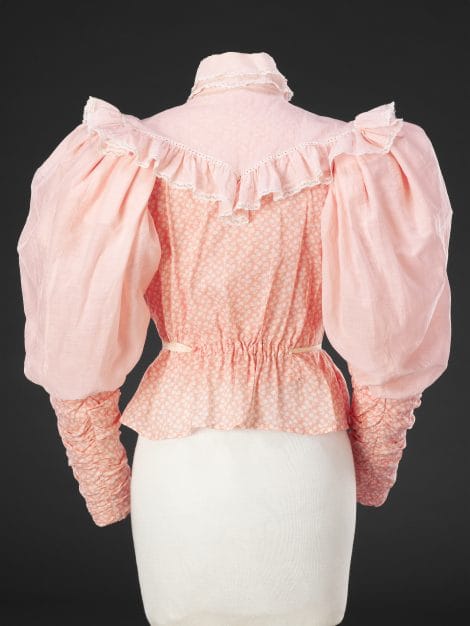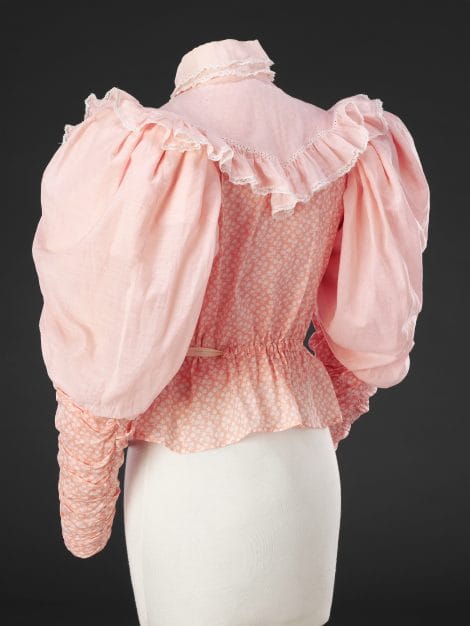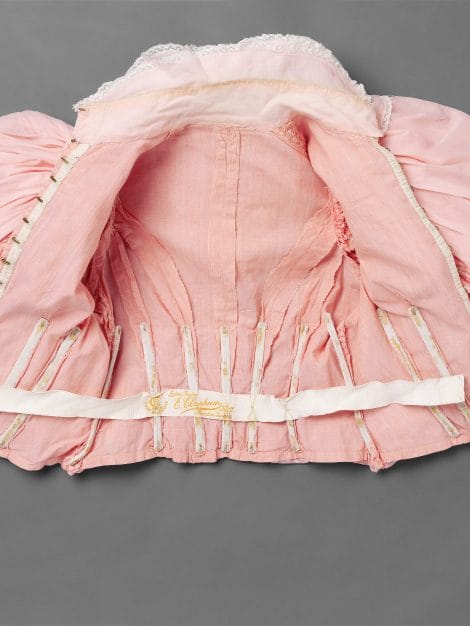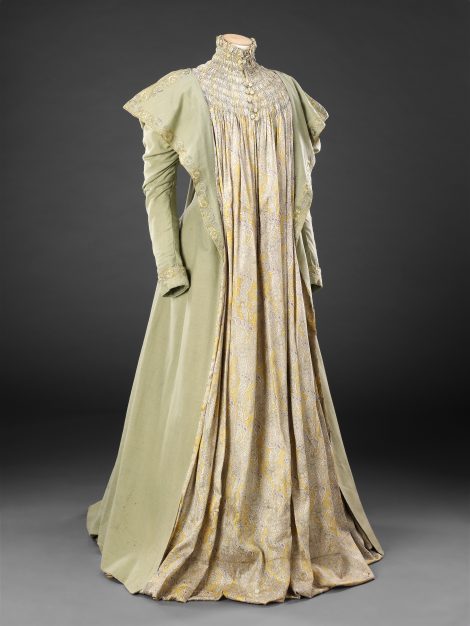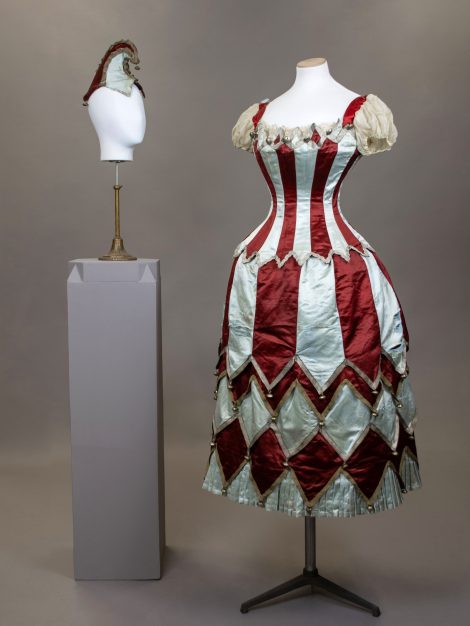Label: ‘Court Dressmaker, Ladies Tailor, E. Clapham, Hull, Kingston Square’
The manufacturer of this bodice, the Hull-based dressmaker Emily Clapham, ran a rare example of an internationally successful high fashion business outside the metropolitan epicentres of the time. As Madame Clapham was mainly known for striking evening dresses and wedding wear, one might suspect that this relatively practical day garment of printed and plain cotton might have been made for one of her bridal trousseaux. With its long, voluminous gigot sleeves, the bodice presumably was part of a fashionable day dress. Despite its blouse-like appearance, it has a boned underbodice, much like many supposedly loose tea gowns of the period (see an example under Related Items).
Reportedly, Clapham’s reputation stemmed from the visual impact of her creations and word-of-mouth recommendations. It was furthered by mentions in fashionable publications like ‘The Lady’s Pictorial’ and ‘The Gentlewoman’ in the second half of the 1890s. They described individual dresses by Madame Clapham that had made an impression at society events. The writer and poet Osbert Sitwell remembers her in his 1944 autobiography ‘Left Hand, Right Hand’ as the maker of his mother’s dress worn in their 1900 family portrait by John Singer Sargent:
‘The dress worn by my mother had been made (…) by the then celebrated dressmaker, Madame Clapham It would seem improbable that any fashionable woman should go especially to Hull for her clothes; but so it was. The mode had originated with the daughters of Mrs. Arthur Wilson and Mrs. Charles Wilson (…) who, coming from that district, had startled London a few years before with their dashing clothes and had soon made the reputation of the local dressmaker whom they were said to patronise.’
Madame Clapham employed a mostly female workroom with a clear hierarchical structure. Vacancies for positions like ‘bodice hands’, ‘skirt hands’ and ‘mantle hands’, advertised in newspapers like the Yorkshire Post illustrate the typical specialisations of dressmakers at the time. The adverts offer ‘good wages’ but also clarify that experience appropriate to a ‘high class’ dressmaking establishment was required.
On 3 June 1896, the Hull Daily Mail reports about Madame Clapham’s violation of the Factory Act under the headline: ‘Hull Dressmaker Fined. Girls Kept At Work Without Tea.‘ Several Factory Acts aimed at improving working conditions in the 19th Century, including the limitation of working hours and compulsory breaks. It was not uncommon for dressmakers to be fined for violations against these rules. Many cases are reported in the press of the time, including the makers of an elaborate 1880s fancy dress from our collection by the Dublin dressmakers Misses Wilson (see Related Items).

